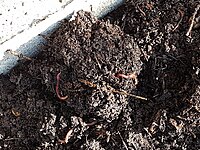
Photo from wikipedia
Abstract Fiddler crab burrow morphologies in tidal flat ecosystems depend largely on physical characteristics of the soil. Herein, we aimed to examine the relationship between soil texture profiles and the… Click to show full abstract
Abstract Fiddler crab burrow morphologies in tidal flat ecosystems depend largely on physical characteristics of the soil. Herein, we aimed to examine the relationship between soil texture profiles and the burrow depths and morphologies of four fiddler crab species: Tubuca arcuata , Gelasimus borealis , Xeruca formosensis , and Austruca lactea . We found that the burrow depths of T. arcuata , G. borealis , and A. lactea (range = 8–50 cm) were strongly affected by surface soil composition; only the burrow depth of X. formosensis (which reached 100 cm in some cases) was influenced by the presence of deeper, clay-rich soils. Specifically, X. formosensis relied more heavily on fine soils, such as clay or silt, when they burrowed deeper into sand-covered mudflats. We hypothesize that deep burrowers, such as X. formosensis, may coat clay-rich soils on their burrow walls to impede flooding and to prevent burrow collapse, suggesting that surface soil composition does not necessarily determine the burrow depth and composition for all fiddler crab species.
Journal Title: Ecological Engineering
Year Published: 2017
Link to full text (if available)
Share on Social Media: Sign Up to like & get
recommendations!